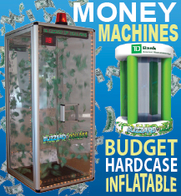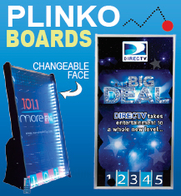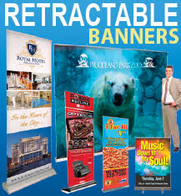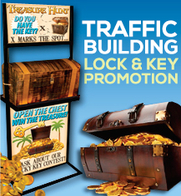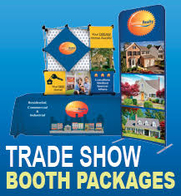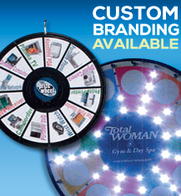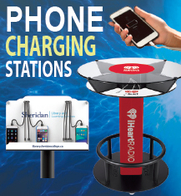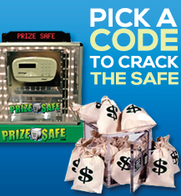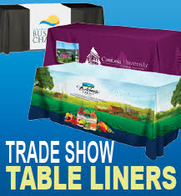 The types of trade show displays you choose for your exhibits play an important role in making an impact on your audience. At some trade shows, your exhibit space will be limited and require a compact, flexible solution.
The types of trade show displays you choose for your exhibits play an important role in making an impact on your audience. At some trade shows, your exhibit space will be limited and require a compact, flexible solution.
At other events, you might have an expansive exhibit and need to make a memorable impression; a large, innovative truss system with integrated lighting and plasma panels might be appropriate. With so many convention marketing ideas, you’ll need to focus your brainstorming and finalize a plan.
There are several types of trade show displays and each type is designed to provide specific advantages, given your budget, need for flexibility, and space limitations. Here’s an overview of the 3 most common types of trade show displays:
#1 – Panel Trade Show Displays
Panel displays are foldable and can be designed to fit a range of exhibit space requirements. They’re lightweight and can stand on the floor or placed on a tabletop. Each panel is normally 2 to 3 feet in width and 3 to 4 feet in length. They’re often constructed of high-quality polymer on sturdy frames and can support nearly twenty pounds. Panel display systems are cost-effective, flexible, and can unfold within minutes.
#2 – Pop-Up Trade Show Displays
Pop-ups are popular because they’re relatively inexpensive and simple to set up. Exhibitors can integrate them into large trade show exhibits or use them as turnkey solutions for smaller exhibits. However, they’re not without limitations.
Even though you can have shelves placed on pop-up displays, they cannot support much weight due to the lightweight frame. And while pop-ups are an economical alternative to larger display systems, they’re not adjustable. That said, if you’re on a limited budget, pop-up trade show displays might be an ideal solution. But, be aware regarding whether their limitations will hamper your goals.
#3 – Truss System Displays
Truss systems are high-end trade show displays. They’re ideal if your budget is flexible and you need to make a stunning impression on your audience. They can attract attention and draw visitors to your exhibit. Truss displays use frames which are constructed of aluminum, giving them a durability that other display systems lack. As a result, they can support a significant amount of weight. In fact, you’ll often see truss systems supporting mounted LCD screens and heavy fixtures.
The drawback is the price. It’s not uncommon for truss displays to cost over $40,000. That said, given your trade show objectives and your marketing budget, it may be a fantastic investment for your company. If you plan to use truss systems, consider hiring trade show contractors who can set up the entire exhibit for you on the convention floor.
Using Trade Show Displays That Deliver An Impact
Your trade show exhibits and displays need to communicate your brand, convince attendees to visit, and allow your booth staff to engage them in conversation. What’s more, they need to do so in a limited space at a price that fits your trade show marketing budget. Bigger is not necessarily better. A creative pop-up display with the right marketing message can deliver a lasting impression upon your audience. On the other hand, larger trade show exhibits might require a durable, versatile truss system.
When they’re well-designed and properly deployed, your trade show displays will make a distinctive impact on your audience, regardless of size.
About the author:
Jonathan Edelman provides helpful advice about trade show strategies. With years of experience in the trenches, he is an expert on booth displays, follow up techniques, and using trade show marketing strategies to boost revenue.








